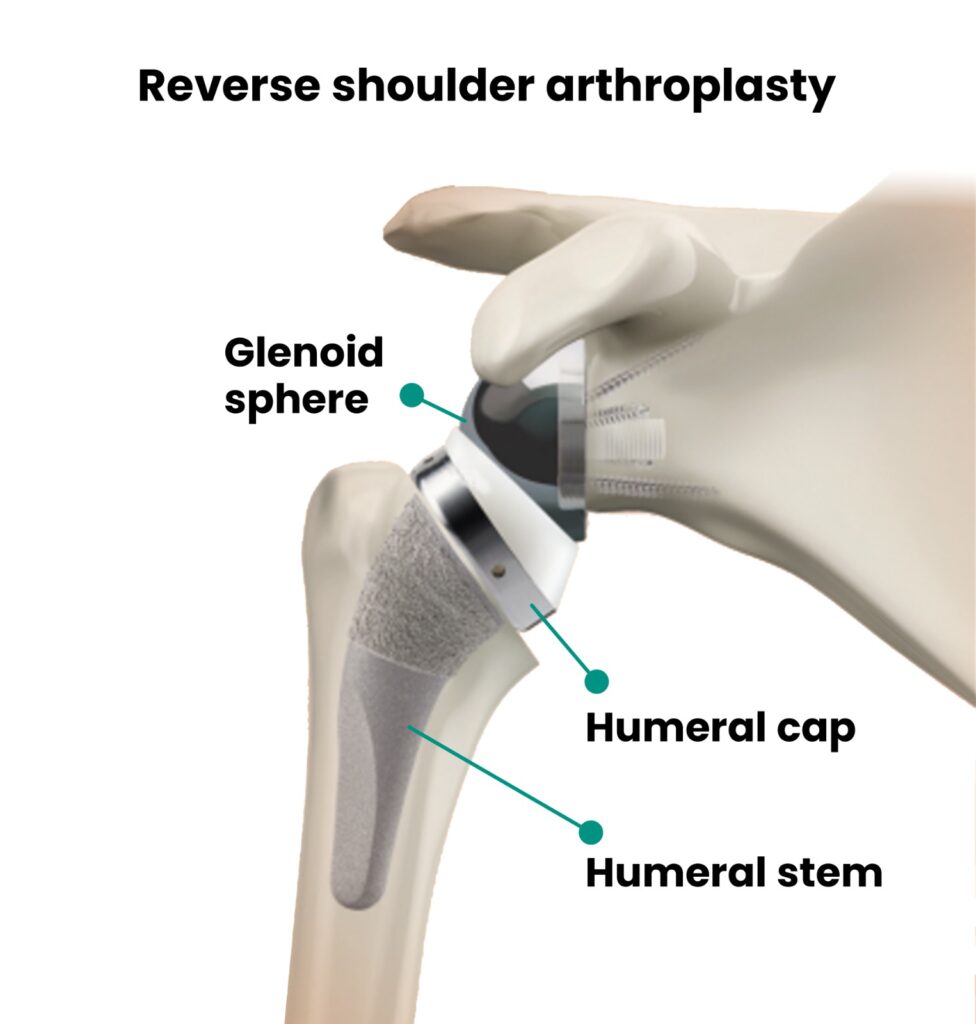Reverse Shoulder Arthroplasty (RSA)
What is a reverse shoulder replacement?
Reverse shoulder replacement is a specialized surgery designed for patients with severe shoulder arthritis combined with irreparable rotator cuff damage. In a standard shoulder replacement, the natural anatomy of the shoulder joint is restored by replacing the damaged humeral head (ball) and glenoid (socket) with prosthetic parts. However, in a reverse shoulder replacement, the positions of the ball and socket are reversed. This change allows the deltoid muscle, rather than the damaged rotator cuff, to move the arm. This surgery is especially beneficial for patients with complex shoulder conditions

Conditions Treated by Reverse Shoulder Replacement
- Rotator Cuff Tear Arthropathy: Severe arthritis caused by long-standing rotator cuff tears.
- Failed Previous Shoulder Replacement: Patients who had traditional shoulder replacements but did not achieve pain relief or function restoration due to rotator cuff issues.
- Severe Shoulder Arthritis: Advanced osteoarthritis or rheumatoid arthritis where traditional joint replacement is not suitable due to rotator cuff degeneration.
- Complex Fractures: Patients with severe fractures of the shoulder, particularly elderly patients, who are unlikely to benefit from traditional repair methods.
Symptoms
- Persistent pain, particularly when lifting the arm or performing overhead activities.
- Loss of shoulder strength, making it difficult to carry out daily tasks.
- Inability to lift the arm above shoulder height or perform certain motions.
- Pain that worsens at night or after physical activity.
Diagnosis
- Physical Exam: Assessment of range of motion, strength, and pain in the shoulder joint.
- Imaging Studies: X-rays to show joint damage and MRI scans to evaluate the condition of the rotator cuff and surrounding tissues.
Surgical Procedure
The surgeon performing a reverse shoulder replacement will:
- Prepare the Shoulder: The joint surfaces that are damaged are removed.
- Reversal of Joint: The shoulder’s typical ball-and-socket structure is inverted. The ball portion is situated on the shoulder blade (glenoid), and the socket portion is situated on the upper arm (humerus).
- Deltoid Activation: The deltoid muscle replaces the rotator cuff in arm movement by reversing the joint.
Recovery
- Post-Operative Rehabilitation: A organized physical therapy program aimed at strengthening the deltoid muscle and restoring range of motion
- Pain management: Using drugs and cold treatments to lessen discomfort and edema.
- Return to Activity: Although complete healing may take up to a year, most patients are able to resume mild activity in three to six months.


